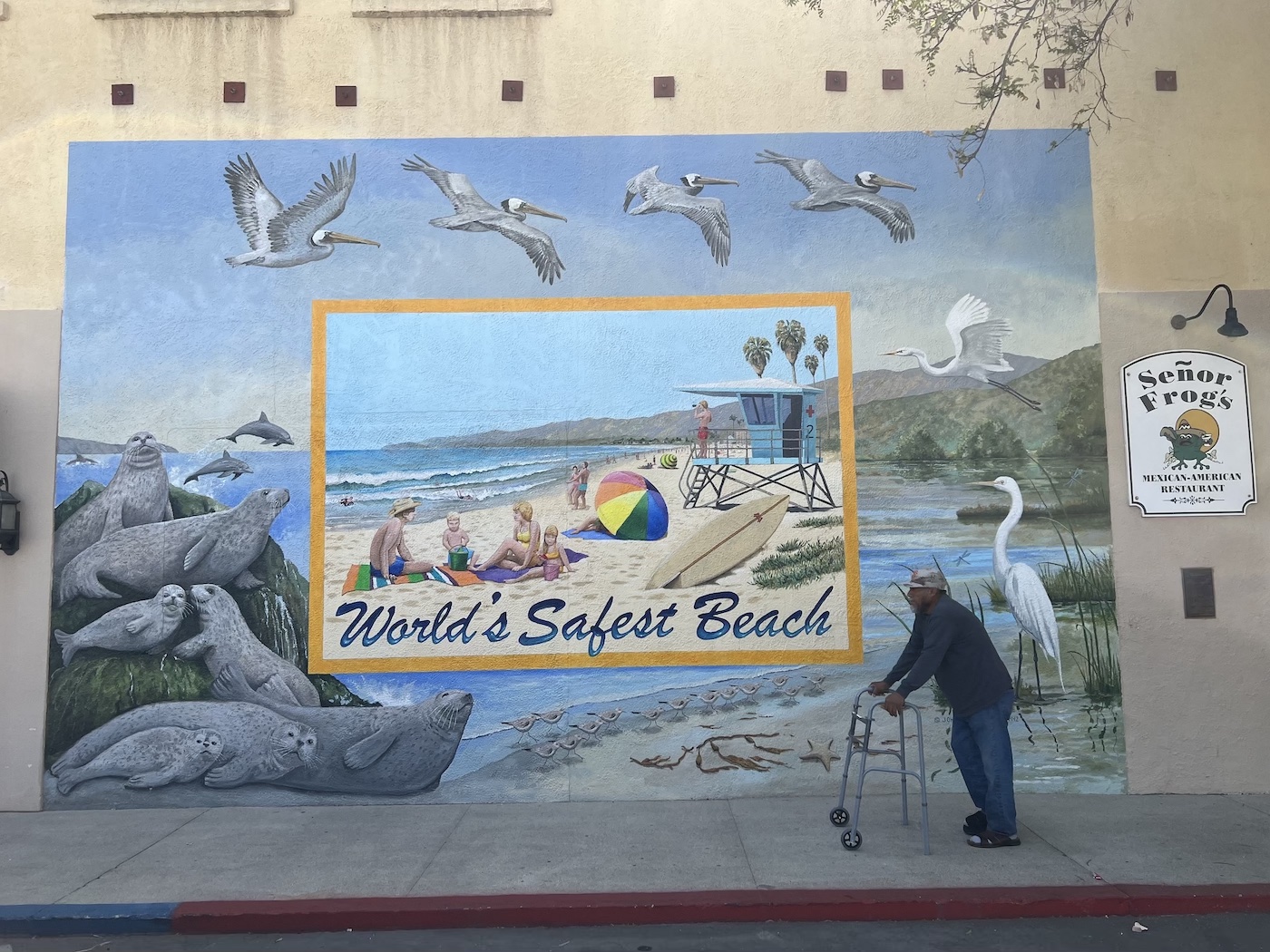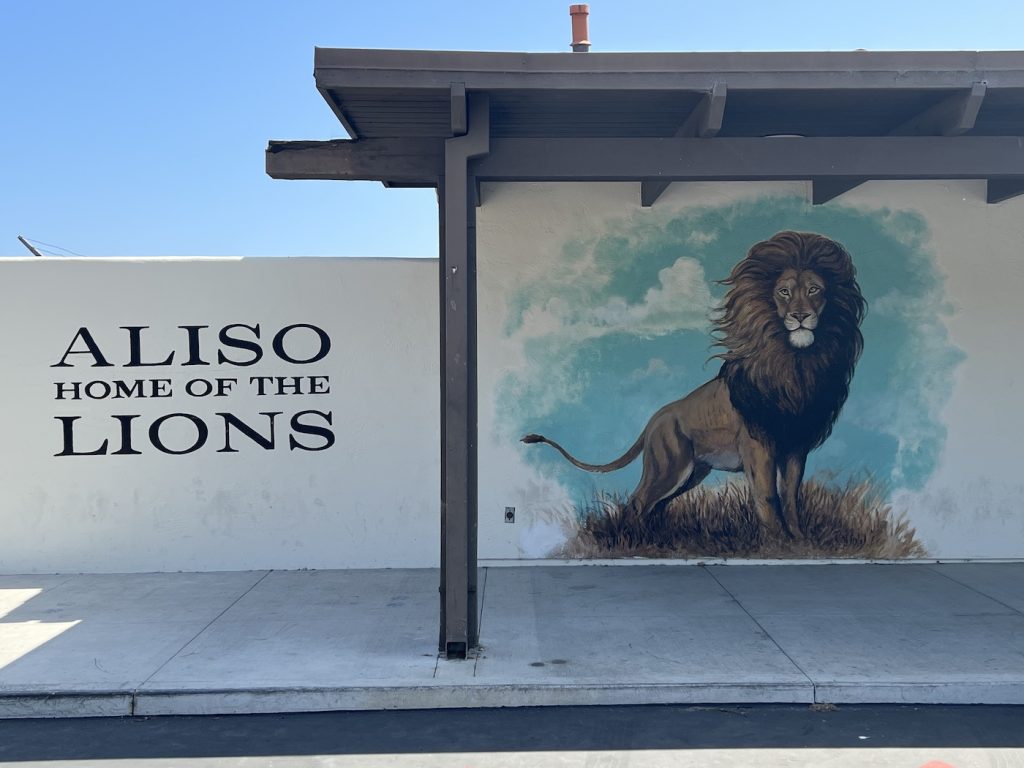Painting the Past, Present, and Future of Carpinteria

Lying just south of Santa Barbara, Carpinteria is known as a beloved beach town with its Latinx culture and agricultural roots: food farmers, avocado and lemon orchards, flower growers, and the cannabis industry where the majority of these workers are Latinx. Flourishing local farms are an essential element to the Carpinteria Valley and to the generations of families still growing for local and international markets.
While these blossoming local farms have been an essential element of Carpinteria, much of the town’s past encompasses troubling aspects of the racially segregated South during the Civil War, and in some ways still remains today.
You can find murals around the city that showcase the beauty of the little ocean town and the lemons that Carpinteria produces, but they lack its rich cultural history. Carpinteria’s Latinx population is over 50% in town and 80% in the schools, but is currently barely represented in the current street art. Instead, there is a mural filled with white people on the local beaches.
The Latinx Arts Project/Carpinteria was created by Suzanne Requejo and MJ writer Leslie Westbrook to launch a Latinx mural project that honors the past and celebrates the present and future of the community. Their hope is to give an accurate depiction of the town’s history, and honor those who lived it, through implementing three murals on the subject of Latinx local history in Carpinteria.
Murals should invite the community viewers to reflect on in its past, but without including Latinx contributions and depictions in the art, Carpinteria is lacking.
For about 27 years, the town’s school system was sharply divided by racial segregation. From 1920 to 1947, Mexican Americans and students with Spanish surnames were sent to Aliso School, a school finished with dirt floors. The school was meant to prep the students for Carpinteria’s lemon industry, workers needed for picking, wrapping, and shipping, with strong efforts to keep Aliso students from enrolling in higher education classes.
A former Aliso student during the school transition period, Benito Antonio Villegas, reflects on his time at the school where he wanted to grow up with an education and leave agriculture behind. But he was asked who would pick the lemons and he knew it had to be him, said Villegas (now age 80).
The first proposed mural is named Past/Pasado and will be a visual representation of the “Mexican Only” Aliso Elementary School that existed for 27 years, along with Carpinteria’s segregated movie theater and beach.


Carpinteria activists will fill a wall with a background of the town’s history. “We want these murals to not only reflect the diversity of our community, but more importantly, they will hopefully reflect the hearts of the community, as well,” said Westbrook, a Carpinteria resident and activist.
Carpinteria schools were finally integrated in 1947, but the unequal experiences that students had has long-lasting impacts on the community. Aliso still remains an elementary school today where 80% of the students are Latino.
The mural will capture the Latinx spirit of the community through displaying a painting with all the beauty and power that comes with it. These complicated yet deeply personal memories of Carpinteria are absolutely essential to the protecting and preserving the past.
The second proposed mural Present/Present will show the ongoing fears of the undocumented community and DACA students while also celebrating Latinx celebrations and holidays like the Day of the Dead (Día de los Muertos).
It is equally necessary to educate the next generation of Carpinterians through an honest representation of how the Latinx community has created pathways for land access, agricultural growth, and international trade while also depicting celebrations and the importance of family, holidays, and parades.
Finally, the third proposed mural, Future/Futuro will render the town’s hope for the future. “It will be a brighter, more integrated rainbow of townsfolk that includes people of Mexican descent along with other ethnicities, cultural identities, and nationalities living together peacefully and happily,” Westbrook said.
On June 14, The Latinx Arts Project/Carpinteria; Proyecto de Artes Latinx/Carpinteria will host their first public event at the Aliso School Auditorium, 4545 Carpinteria Avenue, honoring former Aliso Elementary School students and celebrating the 75th anniversary of desegregation. At this event, this grassroots group will unveil their logo for the project, created by the notable Larry Vigon.
As part of the project, organizers are recording videos of oral histories told by surviving Mexican and Mexican American community members, like 103-year-old Josephine Villegas, who attended Aliso School during the “Mexican only” segregated period. These raw reflections of the past have been preserved for future generations.
The hope to add to the neighborhood in a way that reflects community diversity is a major motivation for the creation of this upcoming mural. The mural goes beyond another beautiful depiction of Carpinteria; it strikes a chord into our segregated past through celebrating Carpinteria’s unique Latinx history.
For more information visit latinxartsproject.org or to donate, the group has a GoFundMe link on their website.
Carly Williams will soon graduate at UCSB in political science and professional writing. Originally from Dallas, TX, she moved to SB 4 years ago with a passion for good food.







